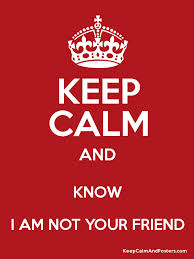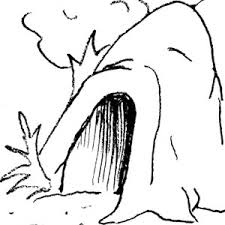If it’s Friday, it’s time to think once again about interactions between various constituencies in academia. Today I am not thinking about faculty-administration relations. I’m wondering instead about the dynamic between professors and students.
One of the challenges and joys of team teaching in an interdisciplinary program—something I have been doing for twenty years—is that you get to teach with all sorts of people. Young and not so young, introvert and extrovert, high maintenance and low maintenance,  collegial and not-so-much, colleagues who belong on the teaching version of Mount Rushmore and others who have a difficult time avoiding embarrassment in the classroom. And everything between these various extremes. The various three- and four-person teams I have been part of have ranged from forever memorable to eminently forgettable. My team last fall was one of the most memorable, largely because one of my teammates was someone who really didn’t want to be there.
collegial and not-so-much, colleagues who belong on the teaching version of Mount Rushmore and others who have a difficult time avoiding embarrassment in the classroom. And everything between these various extremes. The various three- and four-person teams I have been part of have ranged from forever memorable to eminently forgettable. My team last fall was one of the most memorable, largely because one of my teammates was someone who really didn’t want to be there.
I have been directing the interdisciplinary program I teach in for the past three and a half years. Scheduling twenty three-person teams out of the rotating faculty that staff the program from four large departments from semester to semester is one of, if not the most challenging part of the job. Negotiating the time constraints while attempting to honor various faculty “requests” (I want to teach with these people, I do not want to teach with this person, I cannot teach before 9:30 or after 2:30,  I cannot teach more than three days per week and definitely not on Fridays) is like trying to solve a 36-sided Rubik’s cube. The only accompanying perk is that I get to choose who I will teach with each semester. Last fall, one of my teammates was a colleague from history in his last year of teaching before retirement. J had taught in the program I direct in the past, but not for a dozen years or more. I was sure J was not thrilled to be sent back for the first semester of his last year before retirement. Known for his curmudgeonly and crusty demeanor (as well as his expertise in military history), I thought it might be a good idea to put him with me—both because we have been friends for several years (we are frequently at the gym at the same time) and because I wanted to protect unsuspecting colleagues from what J might bring to the table on a bad day.
I cannot teach more than three days per week and definitely not on Fridays) is like trying to solve a 36-sided Rubik’s cube. The only accompanying perk is that I get to choose who I will teach with each semester. Last fall, one of my teammates was a colleague from history in his last year of teaching before retirement. J had taught in the program I direct in the past, but not for a dozen years or more. I was sure J was not thrilled to be sent back for the first semester of his last year before retirement. Known for his curmudgeonly and crusty demeanor (as well as his expertise in military history), I thought it might be a good idea to put him with me—both because we have been friends for several years (we are frequently at the gym at the same time) and because I wanted to protect unsuspecting colleagues from what J might bring to the table on a bad day.
J is in his early seventies; teamed with T,  a classicist from Art History who is in his late fifties as I am, our triumvirate was the “old fart”/”old white guys” team let loose on 100 or so unsuspecting freshmen. It was a blast. It turned out that each of my teammates shared my ironic and sarcastic sense of humor, so we spent the first several weeks laughing in class at each other’s cracks and side comments while the children wrote them down dutifully in their notebooks in the off chance that such information might be on the next quiz or exam, all the time wondering what planet they had landed on.
a classicist from Art History who is in his late fifties as I am, our triumvirate was the “old fart”/”old white guys” team let loose on 100 or so unsuspecting freshmen. It was a blast. It turned out that each of my teammates shared my ironic and sarcastic sense of humor, so we spent the first several weeks laughing in class at each other’s cracks and side comments while the children wrote them down dutifully in their notebooks in the off chance that such information might be on the next quiz or exam, all the time wondering what planet they had landed on.
At one of our first weekly team meetings, the topic of office hours came up. T (a complete rookie in the program) wanted to know whether there was a required amount of office hours a faculty member teaching in the program had to hold per week (there isn’t), prompting J to mention what he had told the students in each of his seminars the first time they met.
These are my office hours. If you have questions or need help, this is when I’ll be in my office. But don’t just drop in to “shoot the shit” or hang out. I am not your friend. I’m in my early seventies and all of you are eighteen years old. If someone my age wants to be your friend, you should call the police.
I wouldn’t have put my office hours policy quite that directly to my students, but I know exactly what J was talking about. There are many faculty colleagues who have students lined up outside their door every day, often just to chat or get life advice (the person whose office is next to mine is one of these people). I am not one of those faculty—nor do I want to be one.
I have written frequently about the interesting challenges and opportunities presented to an extreme introvert by the teaching life. I learned to channel what few extroverted neurons I have directly into my teaching first by treating the classroom like a stage on which I am acting (some of the best thespians I have ever met are naturally introverted). Over the years I not only have internalized these energies so that I no longer feel like I am performing, but also have become far more personal and transparent in the classroom than I used to be. I share so much about myself and my life in the classroom that in some ways my students probably know more about me than anyone other than Jeanne and my sons.  A willingness to be transparent not only breaks down the formality that is inherent in the classroom but also gives me an endless supply of illustrations for difficult philosophical concepts. I think I have become a more naturally open person over the years because of my profession, which is a good thing for a 19-1 introvert on the Myers-Briggs scale.
A willingness to be transparent not only breaks down the formality that is inherent in the classroom but also gives me an endless supply of illustrations for difficult philosophical concepts. I think I have become a more naturally open person over the years because of my profession, which is a good thing for a 19-1 introvert on the Myers-Briggs scale.
But I am still a dedicated introvert, which causes a bit of confusion when my students encounter “Out-of-class Morgan” and find him to be quite different from “In-class Morgan.” I know that almost everyone’s first impression of me before they get to know me (if they ever do) is one of formality, aloofness and perhaps superiority (none of which are actually true—it’s just how introverts are often read by non-introverts). I can live with that and actually make good use of it on occasion. But my students’ first impression of me is in the classroom, where I am extroverted, loquacious, inviting and often funny.  There’s a moment of cognitive dissonance when one of them shows up in my office and finds out that my natural state of being is quite different. I never have been able to make my office an extension of the classroom—my office is first my space, a space out of which I take great pains to create a “Morgan cave.” And in that natural habitat I am my default self. An introvert. That means that my face does not necessarily light up with joy when a student or colleague pokes their head in the door—
There’s a moment of cognitive dissonance when one of them shows up in my office and finds out that my natural state of being is quite different. I never have been able to make my office an extension of the classroom—my office is first my space, a space out of which I take great pains to create a “Morgan cave.” And in that natural habitat I am my default self. An introvert. That means that my face does not necessarily light up with joy when a student or colleague pokes their head in the door— it often feels like an interruption.
it often feels like an interruption.
I’m working on it. Since my office is a cave reflecting my interests, it is full of items as eclectic as the things I love, including tons of books, pictures of the family, penguin paraphernalia and a small stuffed Big Bird, a shot glass that says “I heart Jesus,” and a large coffee cup that says  “I’m a BIG Fucking Deal.” Come to think of it, my Morgan cave is probably a den of cognitive dissonance for the unprepared or uninitiated. Students find out very quickly that I am excellent with and often more helpful in email communication rather than face to face, which is fine with me. Email is an introverts dream; phone calls are not, and unannounced visits definitely are not.
“I’m a BIG Fucking Deal.” Come to think of it, my Morgan cave is probably a den of cognitive dissonance for the unprepared or uninitiated. Students find out very quickly that I am excellent with and often more helpful in email communication rather than face to face, which is fine with me. Email is an introverts dream; phone calls are not, and unannounced visits definitely are not.
I love my students, but I am their professor, not their friend. Some develop into friends over time—my office is full of cards and pictures of former students with whom I have a continuing friendship long after they graduated. I’m looking forward this evening to seeing two of them for the first time in a year and a half. They were students in one of my freshman classes a number of years ago, each took several more classes with me (different ones) over their four years at the college, they started dating as seniors, were married a couple of years later—a happy couple and I take full responsibility for it.  They will be attending a dinner tonight on campus that Jeanne and I will also be attending—they call Jeanne the BCF: “The Birthday Cake Fairy.” It’s a long story and probably the centerpiece of a new post soon.
They will be attending a dinner tonight on campus that Jeanne and I will also be attending—they call Jeanne the BCF: “The Birthday Cake Fairy.” It’s a long story and probably the centerpiece of a new post soon.
I was reminded when reading Ian McEwan’s The Children Act last week that, even though I naturally keep a distance between myself and my students outside of class, I have invited them into something intimate in the classroom that I cannot ignore.  A young man says to the central character in the novel that “I feel you’ve brought me close to something else, something really beautiful and deep, but I don’t really know what it is.” That’s what I love about teaching—I get to open the door to a wonderfully beautiful and profound world for my students on a regular basis. Often the person who opens the door becomes a placeholder for what lies beyond the door. I have to remember that the invitation does not end when I walk out of class—I need to keep the door of the Morgan cave open—at least a crack. Even J learned something during his semester teaching with me. At one of our last team meetings of the semester, J said “Vance, I’m really pissed!” “Why?” I wanted to know. “Because I’m really beginning to like my students.”
A young man says to the central character in the novel that “I feel you’ve brought me close to something else, something really beautiful and deep, but I don’t really know what it is.” That’s what I love about teaching—I get to open the door to a wonderfully beautiful and profound world for my students on a regular basis. Often the person who opens the door becomes a placeholder for what lies beyond the door. I have to remember that the invitation does not end when I walk out of class—I need to keep the door of the Morgan cave open—at least a crack. Even J learned something during his semester teaching with me. At one of our last team meetings of the semester, J said “Vance, I’m really pissed!” “Why?” I wanted to know. “Because I’m really beginning to like my students.”












